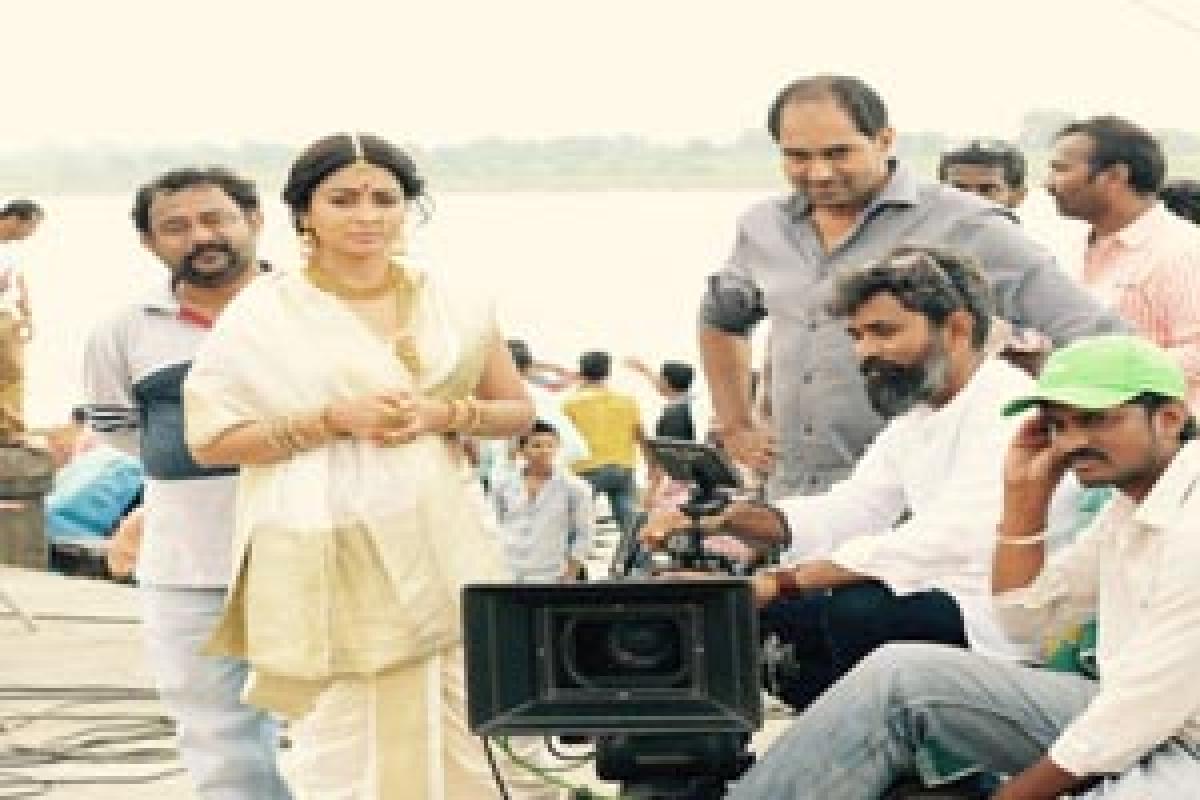Live
- UpStudy: The Smart Solution for Homework Hassles
- Actress Rithika and models inaugurate Sutraa Lifestyle Exhibition
- Loud campaign
- Faculty students celebrated english literature day in Government Degree College
- Huge fire accident.. Shops of street vendors burnt in the fire
- Pawan Kalyan promises to protect the coastal area from sea erosion
- EC Transfers Two Senior IPS Officers in AP ahead of Elections
- DMK analysis predicts victory for INDIA bloc in TN but concedes gains for BJP and NDA too
- India showcasing innovative technologies at World Energy Congress
- IPL 2024: Mitchell comes in for Ravindra as Lucknow opt to bowl first against Chennai
Just In

He was taking a dip at the point of origin of Godavari at Nashik, when filmmaker Krish called Gnana Shekar to discuss ‘Gautamiputra Satakarni’ (GPSK) with him. Interestingly, Koti Lingala, the birthplace of the erstwhile Satavahana ruler Satakarni is located on the shores of river Godavari.
He was taking a dip at the point of origin of Godavari at Nashik, when filmmaker Krish called Gnana Shekar to discuss ‘Gautamiputra Satakarni’ (GPSK) with him. Interestingly, Koti Lingala, the birthplace of the erstwhile Satavahana ruler Satakarni is located on the shores of river Godavari.
And for the cinematographer, the coincidence was too striking. “Godavari had partially dried up at that point and there was litter all around. I decided to pick up the garbage and just as I was doing it, Krish called me and said, ‘Babai, I want to tell you something exciting’.
He began narrating the story of ‘GPSK’. He kept stressing on Godavari and I told him that it was a great coincidence that at that moment, I was right at the place,” the cinematographer exults.
Once Gnana Shekar became a part of the historical, it was his love for period movies that helped in his work. “I am a lot into painting and have observed the work of many Renaissance painters and that made ‘GPSK’ easier to work on than ‘Kanche’. And that’s why, even before we began shooting, the tone and look of the film were subconsciously in my mind.”
He admits that in period films maintaining the same colour and tone is of paramount significance. About the colour tone in ‘GPSK,’ he reveals, “We discussed the tone in detail in the pre-production phase itself. Experimenting with visuals and colour grading during shooting does not work. The colour has to be natural and at the same time it should have a tone.
“I saw Morocco (the first schedule was shot there) as a deserted place. Everything was brown, and there was no other colour to spot! To suit that landscape, we planned to have white costumes with black elements on them. Georgia, on the other hand, was different. It was green, hilly and had snow-capped mountains, and so we had other elements to suit it.”
Gnana Shekar says he shares a very “peaceful and creative” collaboration with Krish. ‘GPSK’ is his fourth film with the National award winning filmmaker. “Before the shoot begins, he narrates the whole scene and we take it from there. I completely understand what he wants to portray on the screen. We don’t have any conflicts while filming as he gives complete freedom to his technicians.”
How did he approach ‘GPSK’? “For this film, it was important to go back in the period and understand that there was no electricity at that time. Therefore, we had to play with flames and that turned to be the toughest job. The lighting had to match the flames and the tone of the film. We couldn’t use blue light and shoot since it would look artificial.
My focus was on natural lights as high-end cameras don’t capture in low light and it was very important to balance the light. We’ve used real oil lamps, as we couldn’t leave lighting for correction in post-production. Everything was done on the location,” he tells us as he recalls how the lamps went off often, requiring them to relight them. “It was a tedious process.”
So, how was the experience of working with Balayya? “Amazing,” he replies, adding, “This was the first time that I was working with a senior hero. I had earlier worked mostly with young heroes. My first fear was how he would be on the sets but to my surprise, he was very friendly and punctual.
He dotes on his cast and crew. During filming, if I told him. ‘Sir, I’m arranging the lights, I need five minutes,’ he would say, ‘please, take your own time’. He was a thorough professional.”

© 2024 Hyderabad Media House Limited/The Hans India. All rights reserved. Powered by hocalwire.com







